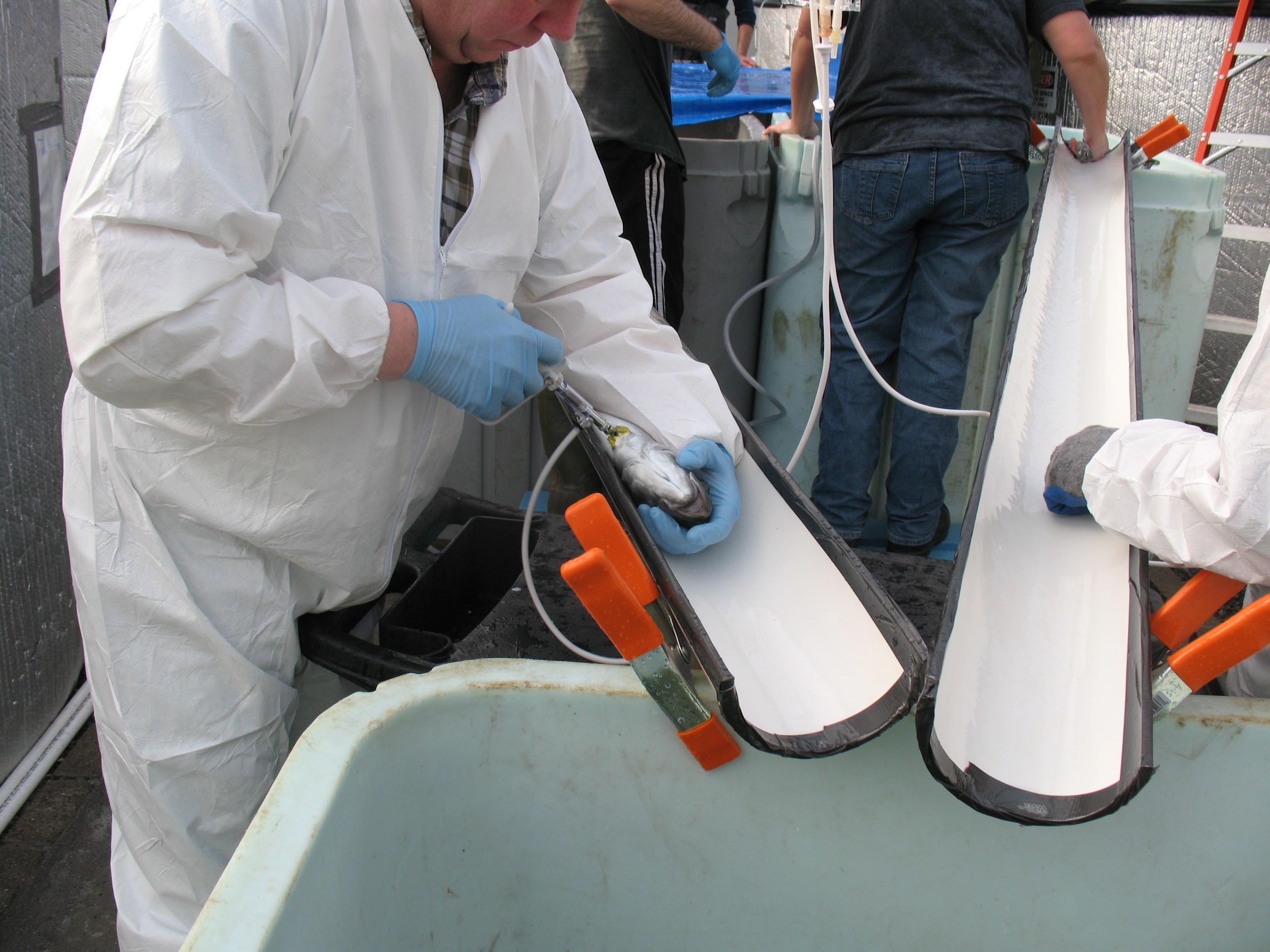Fish Vaccination
In aquaculture, bacteria and viruses can spread quickly when fish are raised in close quarters. Fortunately, many common diseases can be prevented through vaccination. Vaccinating fish is a highly effective way to reduce disease and limit the need for antibiotics, helping to keep both the fish and the environment healthier.
Fish Health Expertise in Maine
Maine is home to a strong network of fish health experts, including researchers, veterinarians, and private companies focused on vaccine development. Key partners in this work include the University of Maine Veterinary Diagnostics Laboratory, Kennebec River Biosciences, and the Fish Vet Group.
At the Center for Cooperative Aquaculture Research, we’ve worked with species like Atlantic cod and California yellowtail, vaccinating them against bacterial diseases using either immersion baths or injections- proven methods to help protect fish and promote healthy aquaculture.
How Fish Are Vaccinated
One common way to vaccinate fish is through immersion. This method is often used for very small fish as their first vaccination. As fish grow, a more effective method is injection, especially when used as a booster after an initial immersion vaccine. Injected vaccines provide stronger and longer-lasting protection. Some vaccines target a single disease, but many are multivalent, meaning they protect against two or more pathogens at once, helping keep fish healthy as they grow.
In the photo below, California yellowtail are injected with a multivalent vaccine developed by Kennebec River Biosciences.

